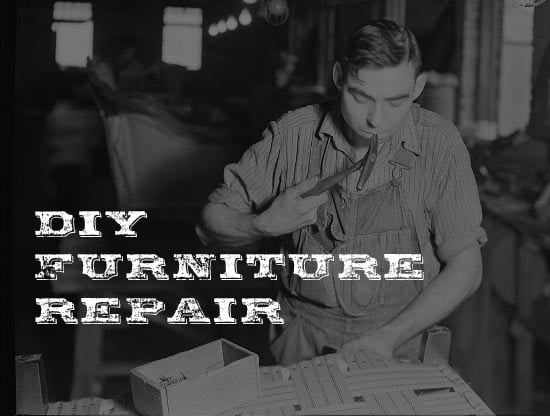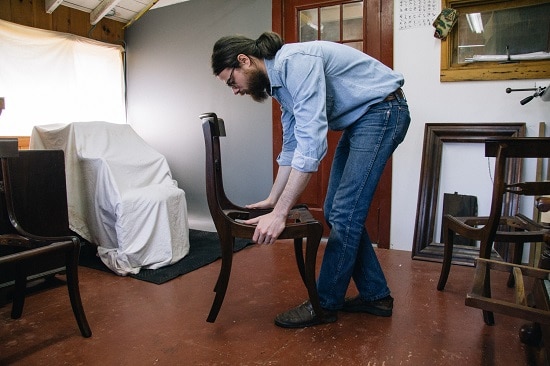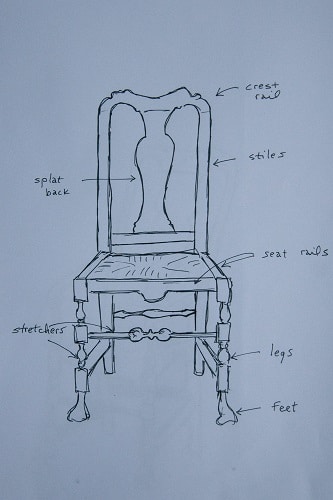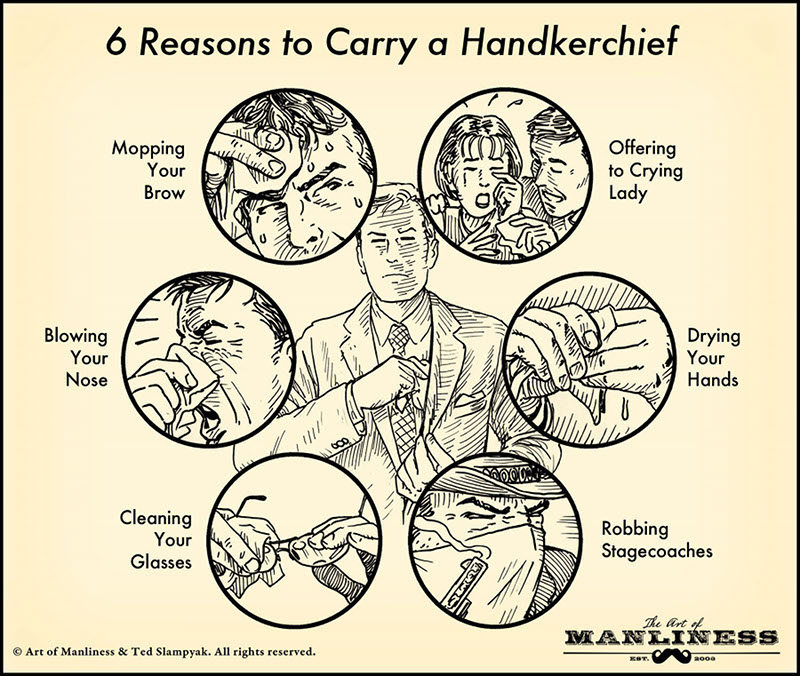
Editor’s note: This is a guest post from Joshua Klein.
Every man should learn how to repair his furniture. Loose and wobbly chairs, broken stretchers, and dangling veneer fragments are all common sights in the average home. While many leave these items neglected until the problem compounds into something greater, some are bold enough to try to remedy the issue…even if they’re unsure of the best way to do it. While their fortitude is admirable, the resulting quick fix almost always causes bigger long-term problems for the piece. Fortunately, ensuring execution of a sound repair rather than a shortsighted one is often an issue of knowledge, not technical skill. No more than the most basic woodworking skills are required. And so I present this two-part series on repairing your own furniture.
But I’m not completely naïve here. I know not everyone sees the value of learning this skill, so before we dive into the how, let me take a minute to start with the why question. You may be asking, “Frankly, who cares if my chair sways a bit when I sit in it?” or, “In this day and age, who really has time to re-glue their furniture when it’s loose? Can’t we just buy the new model coming out next year?” “I’ll just stick this one out in the garage until later. We’ve got other chairs that are fine,” you think to yourself.
If that’s you, hear me out. There are several good reasons you should learn to care for the furniture of your domestic domain. Both practical and philosophical concerns are at issue here and we would do well to consider them.
Reasons You Should Repair Your Own Furniture
Reason #1: Eliminate a Safety Hazard
You don’t want to be the guy who offers a friend or loved one the chair that finally gives way underneath them, sending them crashing to the floor atop pointed wooden shards. At the very least, it’s embarrassing when someone special sits nervously for fear of being the straw that finally breaks the chair/camel’s back. When something is wobbling, that something is dangerous. Don’t say I didn’t warn you.
Reason #2: Impress Your Loved Ones
One of the coolest things about repairing your own furniture is that your lady will swoon. When your skills, knowledge, and dependability set you apart from other dudes it shows your wife and kids how a real man takes care of the stuff he’s responsible for. Be that guy. Seriously, competence in this area will do more for your relationship than all the sappy poetry you place in all your flower bouquets combined.
Reason #3: Plan for Permanence, Not Obsolescence
The planned obsolescence of today’s consumerism is a tragedy. Not only is it wasteful for our furniture to become disposable after only a few years, but even worse, it strips men of the opportunity to develop manual dexterity. When nothing is repairable anymore, there is no reason to learn to work with our hands. Let’s rebel against insatiable consumerism. Investing in well-made pieces enables you to keep furniture of integrity your entire life. Besides, when your time is up, your kids will have something special to inherit.
Reason #4: Leave a Legacy for Future Generations
Speaking of inheriting special things…if you have any antique furniture, think about this: you are only one of the many caretakers of the piece throughout its “lifetime.” Perhaps someone 150 years ago ordered your dining table from a cabinetmaker to commemorate their wedding date. They then ate home-cooked meals with their children at it their whole lives. Then their children inherited it and did the same. Then the next generation acquired it and so on. Learning to appreciate your role in the big picture of your heritage is a dying duty today in our culture. Be a man and honor your past.
Furniture Mindfulness
While it’s certainly manly to repair furniture, it’s even better to prevent the need for such repairs in the first place by taking good care of your possessions. So before we get to how to mend broken things, let’s talk about how to minimize the need for such fixes by practicing furniture mindfulness.
No, I’m not talking about a neo-Buddhist meditation on your table’s joinery. I’m talking about using your furniture in such a way that you’re aware of the weaknesses, and you make sure to avoid stressing them.
In short: use furniture as it was designed to be used. Chairs were not designed to lean back in. Chests were never meant to be pushed or pulled across your carpet. Furniture joinery is very thoughtfully designed, but every created thing has its limitations.
This is especially true for an object 200 years old. The thing may be a dogged survivor, but we have to be realistic that is has been through the ringer having lived with kids, pets, and life’s regular abuse for two centuries. We ought to handle these objects carefully.
A big part of doing that is moving these pieces of furniture correctly, which is what we’ll explore next.
How to Get a Grip

One of the most common scenarios in which damage occurs is when an object is being moved. Whether it’s to the other side of the room or the other side of the country, transit is risky. Grabbing the wrong part to lift could spell disaster.

Part of becoming more mindful of your furniture pieces is learning the names of the parts that compose them.
The principles are basic and pretty easy to remember: Always lift by the largest horizontal structural members. Think chair seat rails (not the crest rail), table aprons (not the top), and the bottom of the chest (not handles or lids). Follow this one principle and your outcome will be much better.
So now you know why you should learn how to repair your furniture, and how to minimize the need for such repairs in the first place. But wear and tear and accidents do happen. So on Friday, I’ll offer the nitty gritty on to make the most common furniture repairs.
___________________
Joshua Klein is a furniture conservator/maker in Midcoast Maine. He is currently writing a book about the furniture making of Jonathan Fisher (1768-1847) of Blue Hill, Maine. He regularly blogs at The Workbench Diary (http://workbenchdiary.com) and is the founder of Mortise & Tenon Magazine (http://mortiseandtenonmag.com).






